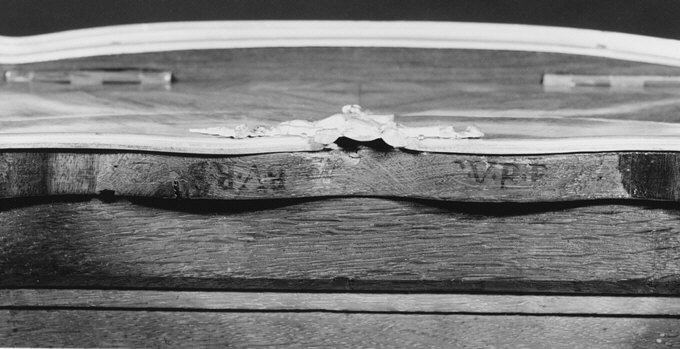Work and writing table (table en chiffonière)
The table en chiffonière is a type of furniture that appeared in France around 1750, as patrons sought to combine a sense of elegance and comfort in their daily furnishings. The top is decorated in floral marquetry of veneered tulipwood and end-cut kingwood, and is hinged at the back, opening to three compartments inside. This kind of table typically included drawers that could be used to hold papers, jewelry, and chiffons or cloth, hence the table’s name. Although van Risenburgh produced a quantity of these small yet functional pieces (similar models can be seen in the Wrightsman collection at the museum—see 1984.471.1 and 1977.102.7), the care he took in making each table is visible in the careful coordination of shaped veneer panels with foliate gilt-bronze mounts, which both embellish and protect the veneer at the corners, legs, and feet of the table. The gilt-bronze moulding around the top has been carefully smoothed at the front side of the top to allow the individual user to dash off small notes with comfort and ease.
Due to rights restrictions, this image cannot be enlarged, viewed at full screen, or downloaded.
This artwork is meant to be viewed from right to left. Scroll left to view more.



